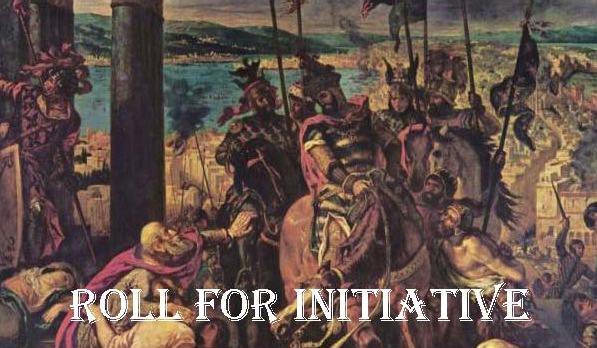
In the early 90s, I headed off from my childhood home seeking fame, fortune and a graduate degree. Only the third goal was achieved, but I did get to spend a lot of that time experimenting with tabletop roleplaying games that didn't have the words "dungeons" or "dragons" in their titles (this is possibly why the fame and fortune parts never materialized). Some of these, I played the heck out of (notably
GURPS), while others, I only tried once or twice (
Chivalry and Sorcery,
Call of Cthulhu,
Alternity,
Star Wars d6,
Pendragon). Another one of this latter group is
Middle-Earth Role-Playing or
MERP by Iron Crown Enterprises.
MERP is a softer, gentler spawn of the angry, ex-Marine drill sergeant of tabletop role-playing games,
Rolemaster. I've never played
Rolemaster, I suppose, because I don't hate myself enough, but even
MERP requires a healthy level of masochism. The interesting thing about
MERP/Rolemaster is that even the DM has to filled with a sense of self-loathing to really embrace the system. Sadistic DMs are better off with
Call of Cthulhu, in which they can inflict all manner of pain on their players without having to beat themselves repeatedly about the head. Anyway, as I was saying,
MERP is a simplified and more approachable game based on the
Rolemaster game engine. Like D&D, it is a class-and-level system, although the power curve is a little less steep. For example, a Warrior will gain 5 development points for weapon skills each level. Each such point may be spent on one of the six weapon skills (1-H Edged, 1-H Concussion, 2-Handed, Thrown, Missile, Polearm) for a 5% to hit bonus or spend 3 points for a 10% bonus. Furthermore, once 10 points have been spent on a skill, the bonuses drop to 2% or 4% respectively. Combat is certainly more complicated than D&D, but not as torturous as
Rolemaster. The character has an offensive bonus (OB) based on weapon skill, relevent stat bonus and magic bonuses which he may dedicate wholly or in part to his attack roll. The attack roll is then penalized by the defensive bonus (DB) of the opponent which is derived from the relevent stat bonus, a shield bonus (if applicable) and any portion of the defender's OB he wishes to commit to parrying. Up to that point, combat is pretty straightforward. The modified result is then compared to a combat matrix for the appropriate weapon group (in Rolemaster, there's a separate combat table for every weapon!) which gives a result that accounts for the type of armour worn by the defender. A typical result will give a number of hits inflicted, but good rolls can result in a critical hits roll. This is where things get painful. This game has critical hits for everything. There are puncture crits, slashing crits, crushing crits, grappling crits, heat crits, cold crits, electricity crits and impact crits and tables for each. If you have a particularly brutal "primary" crit, it can also result in a lesser "secondary" crit as well. Especially bad rolls can also result in fumbles, of which there are several varieties.
Interestingly, aside from the obsession with the minutiae of combat simulation,
MERP is clearly influenced by D&D. There are six stats which correspond pretty closely to the traditional D&D formula; strength, agility, constitution, intelligence, intuition and presence. There are also six character classes, one for each primary stat; Warrior (i.e. fighter; primary stat - strength), Scout (i.e. rogue; primary stat - agility), Animist (i.e. cleric; primary stat - intuition), Mage (i.e. wizard; primary stat - intelligence), Ranger (i.e. ranger; primary stat - constitution) and Bard (i.e. bard; primary stat - presence). All character classes may learn some magic, of which there are two varieities; Channeling (divine) and Essence (arcane). Obviously, the more magic-oriented classes of Animist and Mage have fewer restrictions. Spells are organized into lists of ten, within which all the spells have a related theme and increase in power with each level. For example, the Mage spell list Fire Law starts with a spell called Boil Liquid that can cause a cubic foot per level of liquid to boil and ends with Circle Aflame which conjures an immobile, 10 ft. high wall of flames encircling the caster and which inflicts a heat critical on anyone passing through it.
So, you may ask why I'm posting about a game I played a couple of times some twenty years ago. Well, it turns out I have a ton of supplements for this game that I recently uncovered during a spring cleaning. I had forgotten I even owned most of this stuff. Going through it all has brought back a lot of memories, not so much of the game itself, but of the time in my life when I used to have a lot of free time and, apparently, a lot of disposable income. So, I thought I'd share it with you all.
-Rognar-


